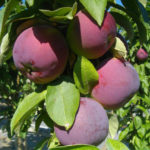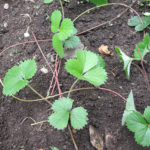Lemon variety Maikop
Maykop belongs to those varieties that are usually called "folk". Specialists did not work on their creation (at least, at the time of their emergence), they did not acquire wide international fame, remaining popular among amateurs-citrus growers in the post-Soviet space.
How did the variety come about?
It seems that work on this variety began at the beginning of the 20th century, in Tsarist Russia. Even then, in the southern regions of the empire, tub growing of lemons became popular, most of which came here from the Caucasus and Turkey.

Numerous homemade citrus growers experimented tirelessly, sowing fruit seeds and waiting for seedlings to bear fruit. This is a long-term business that requires many years and great patience. The most interesting, promising ones were selected from the obtained fruit-bearing wild animals, and seed material was also taken from them.
This went on for many decades, until in the mid-60s of the last century it became clear: in fact, a new lemon variety had been created in the region! It was named on a geographical basis - Maikop.
Description of the variety
The story above explains why this lemon has no industrial value. It was originally created "with an eye" on the container content in the rooms. Despite the expansion of many excellent foreign varieties, Maikopsky did not get lost, did not give up its positions, although now it is less popular than it was before. But in the collections of enthusiasts, especially in southern Russia, he is often present.
Crown characteristics... Due to the fact that the selection of the variety was stretched over time and, as it were, "blurred", several types, or clones of Maikop, with obvious external differences, appeared. In particular, this was reflected in the shape of the crown, it can be of two types:
1) Standard trees with a beautiful, symmetrical crown. The branches are arranged semi-vertically, they are strong, devoid of thorns. Crown height from 1.5 to 2 meters.
2) A bush consisting of several stems. The result is a loose, well leafy crown that also does not have thorns. The branches tend to grow either horizontally or even point downwards.
The leaves of this citrus are strong, dark green in color, with a waxy sheen. On copies of the "standard crown" they have serrations along the edges, on the "bush crown" the edges of the leaf plate are almost even.
A special feature is the fact that many small branches-fruits grow on the tree, at the tips of which fruits are tied. There are more such fruiting branches on plants that form a bush crown.
Instances of this variety are excellently adapted to the living conditions, they firmly endure dry air and lack of lighting. They can survive during a warm winter, although they still prefer, like all lemons, winter rest at low temperatures.
Bloom... Flowers appear mainly at the end of winter and in the first half of spring. They are located on fruit twigs in small inflorescences, 3 - 5 pieces each. The buds are slightly pink, sometimes purple. The petals are white, large, with a strong aroma. A small number of flowers can bloom in the summer. The first flowering usually occurs in the fourth year of the plant's life.
Description of fruits... Maykop lemon is known for its high yield. The best tubular specimens are capable of producing from 150 to 300 fruits annually! At the same time, fruiting does not decrease for 15 - 20 years.
The fruits of this variety are medium-sized, with an average weight of about 130 grams.
Interesting! Clones with a standard crown form larger fruits, but they are fewer in number. Shrub forms are famous for the abundance of fruits, but smaller in size.
The following characteristics will make the description of the fruit more complete:
- the peel is rough, thin, with a strong, pleasant aroma;
- the color of the peel is yellow, sometimes with greenish, but rather light shade;
- during ripening, the shape of the fruit is elongated, elongated, but by the time of full ripening it can change greatly, often becoming very asymmetrical:
- at the end of the fetus there is an inconspicuous blunt nipple, practically devoid of a rim;
- good taste, but inferior to the best homemade varieties.
Regarding the latter, it must be said that the taste of the fruit strongly depends on the conditions of detention, as well as on which clone you came across. The fact is that, unfortunately, the variety has been degenerating recently, losing its standards. Numerous cuttings and cloning, uncontrolled infusions of "new blood", carried out without the participation of specialists, have an effect.
Summing up, we can say that the best trees of our variety are excellent plants for home keeping, but there are few of them, and the Maikop lemon needs the intervention of professional botanists and breeders.








